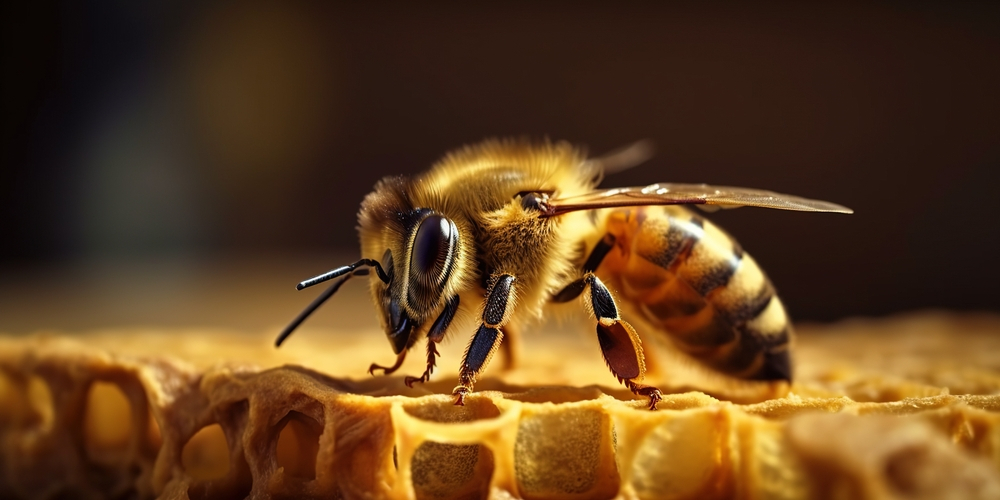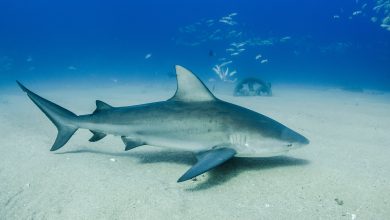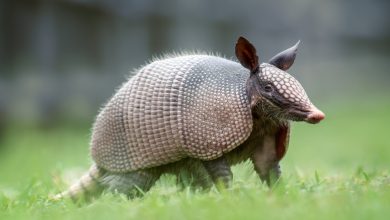Unbelievable Fun Facts About the Animal Kingdom

Welcome to the mesmerizing world of animals, where wonder and curiosity intertwine! The animal kingdom is a vast tapestry of life, showcasing an astounding diversity of species. From the tiniest insects to the largest mammals, every creature exhibits unique behaviors and adaptations that can leave us in awe. Consider the chameleon’s ability to change colors, or the way bees dance to communicate — these fascinating traits reveal just a fraction of the wonders our animal friends possess.
Learning about these fun and unbelievable facts is not just entertaining; it’s a gateway to a deeper appreciation of the natural world. By understanding the incredible abilities and characteristics of animals, we gain insights into the intricacies of evolution, ecosystems, and the delicate balance that sustains life on our planet. So, whether you’re a seasoned wildlife enthusiast or just beginning your journey into the world of animals, prepare to be amazed and inspired by the incredible stories we’re about to share.
Section 1: Surprising Super Powers
Nature often works in mysterious ways, equipping animals with super powers that rival even the most imaginative science fiction.
Take chameleons, for instance, which are renowned for their ability to change color. This remarkable feat is not just for camouflage; it plays a vital role in communication, temperature regulation, and even mood display. By adjusting specialized cells called chromatophores in their skin, chameleons can rapidly alter their appearance to blend in or stand out as needed.
Equally captivating are electric eels, whose shocking abilities can both stupefy prey and deter predators. These fascinating creatures generate electricity using specialized cells known as electrocytes, producing electric pulses powerful enough to stun a sizable fish.
Equally elusive are cuttlefish, masters of disguise within the marine world. These cephalopods utilize a complex network of pigment cells and reflecting plates in their skin to mimic the colors and textures of their surroundings almost instantaneously.
This natural form of shape-shifting enables them to evade predators and surprise prey with astonishing proficiency. These super powers not only underscore the ingenuity of nature but also inspire scientific advancements and deepen our appreciation for the animal kingdom’s incredible diversity.
Section 2: Record-Breaking Creatures
The animal kingdom is full of record-breakers, each holding a unique title that highlights the extraordinary diversity of life.
Take the Etruscan shrew, for instance, which claims the title of the smallest mammal in the world. Weighing in at just 1.8 grams and measuring about 4 centimeters in length, this tiny creature has an incredibly fast metabolism, eating up to twice its body weight in food each day to maintain its energy levels.
Moving from the smallest to the fastest, the peregrine falcon is a marvel of the avian world. This skillful predator can reach staggering speeds of over 240 miles per hour (386 kilometers per hour) during its hunting stoop (dive), making it the fastest bird on the planet.
Meanwhile, in the vast oceans, the blue whale reigns supreme as the largest animal ever known to have lived on Earth. These gentle giants can reach lengths of up to 100 feet and weigh as much as 200 tons — their hearts alone are the size of a small car.
Despite their enormous size, blue whales are known for their soothing songs and gentle nature, often interacting with humans in surprisingly affectionate ways. These record-breaking creatures not only astound us with their unique abilities and characteristics but also remind us of the limitless wonders of the natural world.
Section 3: Unusual Communication Methods
Communication in the animal kingdom often surpasses human imagination, with several species demonstrating extraordinary methods to convey vital information.
Take the honeybee, for example: these industrious insects perform a “waggle dance” to communicate the location of food sources to their hive mates. By shaking their bodies and tracing specific patterns on the honeycomb, bees relay detailed information about the direction and distance to nectar-rich flowers, enabling the entire hive to efficiently gather food.
Elephants, on the other hand, employ a more subtle yet equally impressive communication technique. They use infrasound—low-frequency sound waves that travel over great distances—to stay in touch with herd members and coordinate movements, even when they are miles apart. This capability allows them to maintain social bonds and avoid potential threats.
Meanwhile, birds add their own twist to the communication landscape; certain species exhibit regional dialects in their songs, much like humans have accents. These dialects are learned from neighboring birds and can help individuals identify and bond with local populations, as well as deter intruders from other regions.
These unique communication methods highlight the incredible adaptability and intricate social structures within the animal kingdom.
Section 4: Unique Habitats and Adaptations
The animal kingdom’s ingenuity is most evident in the way different species adapt to some of the planet’s harshest environments.
Take, for instance, the kangaroo rat, an extraordinary desert survivor that can live its entire life without directly consuming water. This remarkable rodent has evolved to extract sufficient moisture from its diet of seeds and plants, and its kidneys are highly efficient at conserving water.
On the other end of the temperature spectrum, the polar bear epitomizes Arctic resilience. With a thick layer of blubber and dense, water-repellent fur, polar bears are well-equipped to endure the extreme cold. They also have a keen sense of smell that can detect seals nearly a mile away, essential for hunting in a land of ice and snow.
Venturing into the abyssal depths of the ocean, the anglerfish showcases adaptations that allow it to thrive in perpetual darkness. This deep sea dweller is equipped with bioluminescent lures extending from its head to attract unsuspecting prey, and its mouth is engineered to swallow prey up to twice its size.
These unique adaptations highlight the remarkable versatility and resilience of animals, reflecting nature’s boundless capability to overcome environmental challenges.
Section 5: Incredible Lifespan
The natural world is home to some truly astonishing examples of longevity, with certain species exemplifying the incredible variety of life spans that evolution has produced.
Topping the charts among terrestrial animals are tortoises, particularly the Galápagos tortoise. These majestic creatures can live well over a century, with some individuals reaching close to 200 years. Their impressive longevity allows them to witness multiple generations of change within their ecosystems, making them living symbols of enduring resilience.
In a completely different environment, brine shrimp eggs exhibit another fascinating approach to longevity. These tiny crustaceans’ eggs can lie dormant for several years—sometimes even decades—waiting for the right environmental conditions to hatch. This adaptation allows brine shrimp populations to survive through harsh periods, effectively putting life on pause until conditions improve.
Meanwhile, in the chilling depths of the Arctic, the Greenland shark holds the title for the longest-living vertebrate. Recent discoveries have shown that these deep-sea dwellers can live for over 400 years, with some estimates suggesting they could reach ages of 500 years or more. The secret to their longevity remains a topic of active research, shedding light on the mysteries of age and survival in extreme conditions.
Through the diverse strategies employed by these remarkable creatures, we gain profound insights into the myriad ways life can persist and thrive across centuries.
Conclusion
The animal kingdom never ceases to amaze us with its endless wonders and incredible facts. From the mind-boggling speeds of the peregrine falcon to the immense size and gentle nature of the blue whale, our planet is home to an array of awe-inspiring creatures.
We’ve delved into the unique communication methods of honeybees, elephants, and birds, explored the incredible adaptations of species like the kangaroo rat, polar bear, and anglerfish, and marveled at the extraordinary lifespans of tortoises, brine shrimp, and Greenland sharks.
These unbelievable fun facts highlight the diversity and ingenuity of life on Earth, reminding us of nature’s limitless creativity and resilience. As we continue to observe and learn more about the animal kingdom, we deepen our appreciation for the remarkable creatures that share our planet.
We encourage you to go out and discover the fascinating world of animals around you, whether it’s in your backyard or at the local zoo. There’s always something new and exciting to learn. Don’t forget to share your favorite animal facts in the comments below – we can’t wait to hear what amazes you the most!
We hope you’ve enjoyed diving into the unbelievable fun facts about the animal kingdom! If you’re as fascinated by these remarkable creatures as we are, why not delve deeper into their world? Here are a few recommendations to enhance your knowledge:
Recommended Books and Documentaries
- Books:
- The Hidden Life of Trees by Peter Wohlleben
- The Secret Lives of Bats by Merlin Tuttle
- An Immense World by Ed Yong
- Documentaries:
- Planet Earth series narrated by David Attenborough
- The Blue Planet series narrated by David Attenborough
- Our Planet available on Netflix
Support Wildlife Conservation
Conservation is key to protecting these incredible species and their habitats. Consider supporting these reputable organizations dedicated to wildlife conservation:
- [World Wildlife Fund (WWF)](https://www.worldwildlife.org/)
- The Nature Conservancy
- Wildlife Conservation Society Stay ConnectedIf you loved this post, make sure to subscribe to our blog for more intriguing content about the natural world. By subscribing, you’ll never miss an update and will be the first to know when we share new fascinating facts and stories about the animal kingdom. Join our community of nature enthusiasts and stay informed!We also value your insights and experiences. Share your favorite animal facts in the comments below – we can’t wait to hear what amazes you the most! Thank you for your passion and support in celebrating the wonders of our planet’s wildlife.




